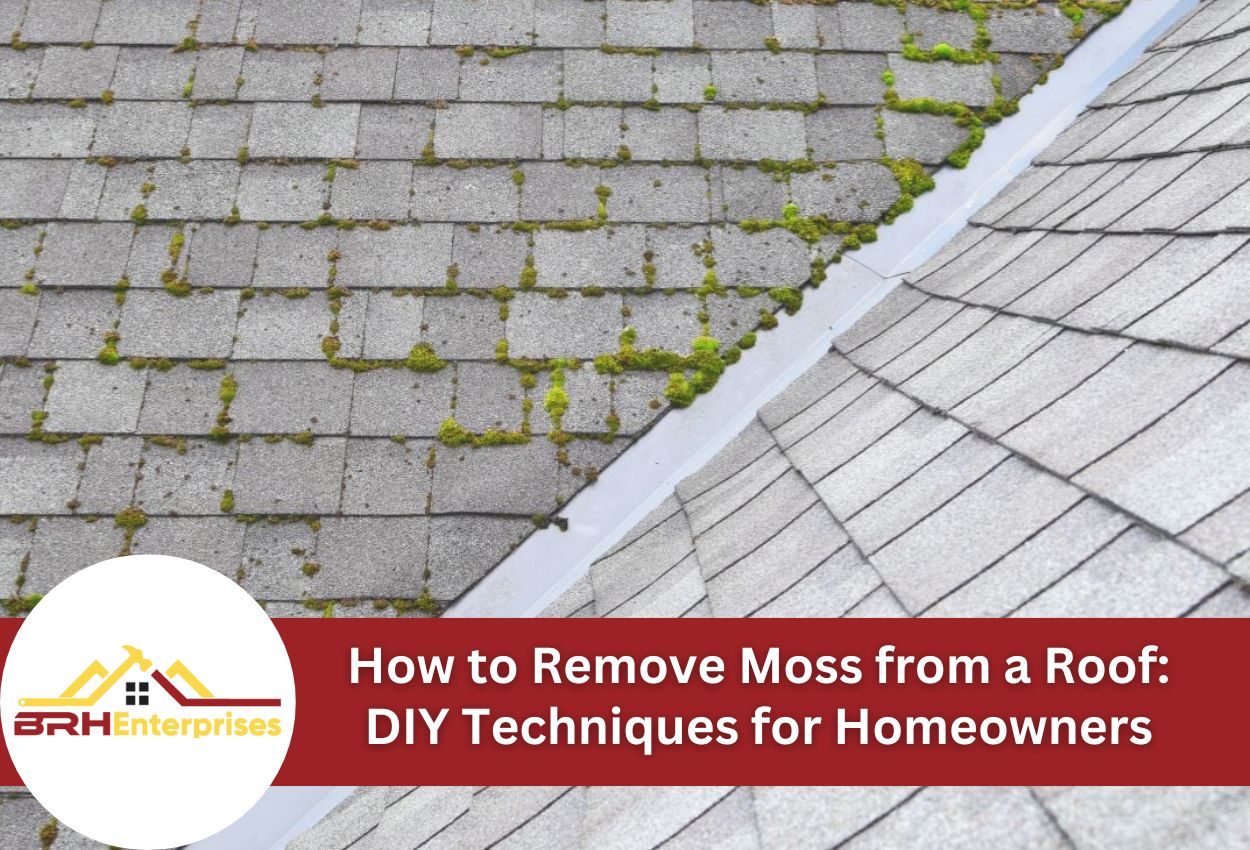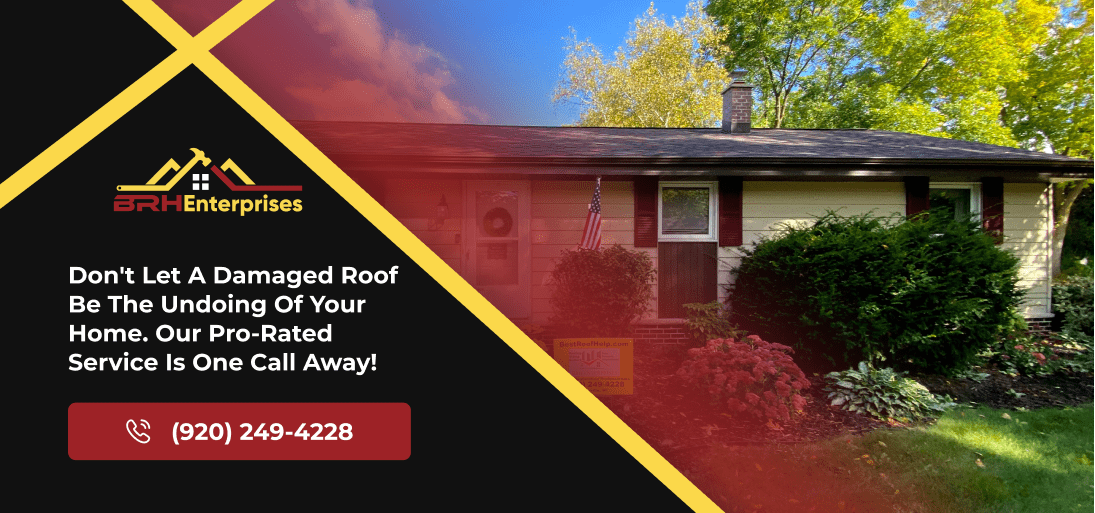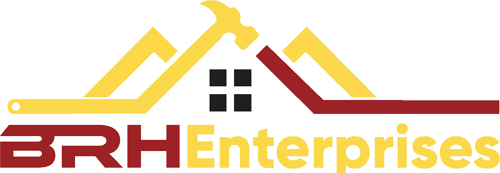How to Remove Moss from a Roof: DIY Techniques for Homeowners
Estimated Reading Time : 6 Min.

The persistent humidity and shade common across Southern Wisconsin create perfect conditions for moss to thrive on rooftops. Those green, fuzzy patches may seem harmless at first, but moss retention on your roof can lead to serious structural problems if left untreated. As moss grows, it traps moisture against roofing materials, eventually causing shingles to lift, crack, and deteriorate prematurely.
Roof moss removal methods vary based on your roofing material type. What works for asphalt shingles might damage metal or tile roofs. Moss growth can be difficult to treat in Southern Wisconsin due to our regional climate patterns, making regular inspection and maintenance particularly important.
Effective moss removal combines both immediate cleaning solutions and long-term prevention strategies. From gentle washing methods to zinc strip installation, the right approach protects your roof while eliminating the patchy growth. Understanding when to tackle roof moss is equally important. Timing your removal during dry weather generally has the best results and minimizes potential water damage.
Many Wisconsin homeowners successfully handle roof moss removal as a DIY project, while others find professional assistance more practical, especially for steep or complex roofing systems. Whether tackling the job yourself or hiring experts, addressing moss growth helps extend your roof’s lifespan and maintains your home’s curb appeal and value.
Understanding Why Moss Grows on Wisconsin Roofs
Southern Wisconsin’s climate creates ideal conditions for moss to flourish on rooftops. The region’s humidity levels, specifically during spring and fall months, provide the moisture moss needs to establish and spread. North-facing roof sections receive less direct sunlight, creating shadier, cooler, and damper environments where moss thrives year-round. These conditions are especially problematic for homes surrounded by trees that block sunlight and drop organic debris onto roofs.
Different roofing materials interact with moss in unique ways. Asphalt shingles are more vulnerable as their granular surface traps moisture and provides numerous crevices where moss can anchor its rhizoids (root-like structures). Once established, these rhizoids lift shingles and create pathways for water infiltration. Metal roofs generally resist moss better, but aren’t immune, especially in heavily shaded areas. Clay and concrete tiles may develop moss in the grooves between tiles, where water naturally collects.
The age of roofing materials also impacts moss development. Newer roofs with intact protective granules resist moss better than aging ones. Wisconsin homes with roofs approaching 15 to 20 years old often show accelerated moss growth as protective surfaces deteriorate. Understanding these factors helps homeowners develop targeted removal and prevention strategies based on their specific roofing situation.
Safe DIY Moss Removal Methods That Work
Wisconsin homeowners dealing with roof moss can tackle the problem effectively without professional help using several methods. For manual removal, start by choosing a dry, overcast day to prevent rapid drying of cleaning solutions. Using a soft-bristled brush or broom, gently sweep downward on the roof to dislodge moss patches. Never scrub upward as this can damage shingles by lifting them against their natural lay. A plastic scraper can help with stubborn patches, but avoid metal tools that might gouge roofing materials.
For a gentle and chemical-free cleaning solution, mix equal parts white vinegar and water. This acidic mixture kills moss without harming most roofing materials. Apply it generously to affected areas and let it sit for 20 to 30 minutes before rinsing with low-pressure water. Another proven homemade remedy combines 8 ounces of dish soap with 2 gallons of water. The soap breaks down the waxy outer layer of the moss, causing it to dry out and die.
For more stubborn infestations, try mixing 1 pound of oxygen bleach powder with 2 gallons of water. Unlike chlorine bleach, oxygen bleach won’t damage colored shingles or harm plants below. Apply any solution on a windless day to ensure it stays where needed. After treatment, rinse thoroughly with a garden hose, working from the top down. Most moss will loosen within days, making removal easier with gentle sweeping.
Commercial Products and Tools for Stubborn Moss Problems
When DIY solutions aren’t enough for persistent moss issues on Wisconsin roofs, commercial products offer stronger alternatives. Zinc-based moss killers like Moss B Ware and Moss Out!® are effective in our climate, as they continue working during rainfall. These products come in granular form for easy application and provide residual protection. For liquid applications, products containing potassium salts of fatty acids break down moss quickly without staining roofing materials. Always select products specifically labeled as roof-safe to avoid damaging your shingles or voiding manufacturer warranties.
Application methods matter when using commercial products. For granular treatments, roof peak distribution allows rainwater to carry the active ingredients down the roof surface. For liquid products, garden sprayers with extension wands provide safer application from a ladder positioned at the eaves. Always check the product label before applying these products, as rain may reduce their effectiveness and potentially harm landscape plants.
For mechanical removal, tools make the job safer and more effective. Soft-washing combines low-pressure water with cleaning solutions to remove moss without damaging shingles. Never use pressure washers on asphalt shingles because the force can damage the roof. Southern Wisconsin roofing professionals often recommend telescoping soft-bristle brushes for safe removal from the ground or ladder.
Best Time to Remove Roof Moss in Wisconsin
Timing is crucial when tackling roof moss in Wisconsin. Late spring (May to early June) offers ideal conditions as moss is actively growing but not yet producing spores. The moderate temperatures and lower humidity create perfect working conditions while giving treatments time to work before summer heat. Early fall (September to October) provides another excellent window after summer humidity decreases but before freezing temperatures arrive.
Wisconsin’s weather patterns require strategic planning. Aim for a stretch of at least two dry days, one for treatment and another for the solution to fully penetrate and work. Morning application is typically best, allowing treatments to dry completely before evening dew. Avoid moss removal during July and August when high humidity can prevent solutions from properly drying and potentially cause runoff during afternoon thunderstorms.
Winter moss treatments are generally ineffective in Wisconsin as freezing temperatures prevent products from properly activating. Similarly, early spring applications often wash away during our notorious April rain showers. The freeze-thaw cycles common in Wisconsin winters can loosen moss naturally, making spring cleanup more effective when timed correctly.
Always check weather forecasts before scheduling moss treatment. Ideal conditions are temperatures between 50 and 70 degrees Fahrenheit with low wind and no rain expected for 24 to 48 hours. These weather windows maximize treatment effectiveness while minimizing potential damage to your roofing materials, particularly important for older roofs throughout southern Wisconsin.
How to Prevent Future Roof Moss Growth
Once you’ve successfully removed moss from your roof, preventative measures are crucial to keep it from returning. In Wisconsin’s humid climate, moss can reestablish itself quickly without proper prevention strategies. Installing zinc or copper strips along the roof ridge creates a natural moss deterrent that works continuously with each rainfall. When rain flows over these metal strips, it carries small amounts of zinc or copper ions down the roof, creating an environment hostile to moss growth.
Regular maintenance plays a key role in long-term moss prevention. Establish a bi-annual schedule to clear roof debris, particularly in fall after leaves drop and in spring after winter storms. Trim back overhanging branches that create shade and drop organic matter onto your roof. Even minor tree trimming can significantly increase sunlight exposure, creating drier roof conditions where moss struggles to grow. Keep gutters clean to prevent water backup and moisture retention along roof edges, a common starting point for moss colonization on Southern Wisconsin homes.
Consider adjusting your landscaping strategy to reduce the chances of roof moss growth. Direct sprinkler systems away from the house to avoid unnecessary roof moisture. For persistent moss problems, professional roofers throughout the Mayville area can apply long-lasting preventative treatments that provide multi-season protection suited specifically to Wisconsin’s climate.
When to Call a Southern Wisconsin Roofing Professional for Moss Removal
While many moss removal tasks can be handled as DIY projects, certain situations warrant professional intervention. If you notice shingles curling, cracking, or missing granules in moss-affected areas, this indicates the moss has already caused significant damage. Extensive moss coverage (more than 30% of your roof surface) typically requires professional equipment and expertise to address effectively. Additionally, if you’ve attempted DIY removal but the moss returns quickly, this suggests deeper issues that professionals can diagnose.
When contacting Southern Wisconsin roofing contractors, ask specific questions about their moss removal approach. Inquire whether they use low-pressure washing techniques appropriate for your roofing material, as high-pressure methods can damage asphalt shingles and other materials. Ask about their prevention strategies. Quality professionals should offer solutions like zinc strip installation rather than just cleaning. Request information about the specific products they use and whether these might affect your roof warranty.
Professional roofers can also identify issues that may be causing excessive moss growth, such as drainage problems or ventilation issues. For homes with steep pitches or complex roof designs, professional intervention eliminates safety risks associated with DIY removal. Most importantly, experienced contractors can assess whether your roof moss problem is merely cosmetic or indicative of more serious damage requiring repairs beyond simple cleaning.
Protect Your Home with Expert Moss Removal Services
If you’re struggling with moss on your roof and are concerned about potential damage, don’t wait for the problem to worsen. In Southern Wisconsin, where moss thrives due to the humid climate, it’s crucial to address this issue promptly to maintain the integrity of your roofing materials. BRH Enterprises LLC specializes in effective moss removal techniques that are tailored to protect your specific roof type, whether it’s asphalt shingles, metal, or tile.
Our trained professionals use the latest roof-safe moss killers and specialized tools to ensure thorough cleaning without harming your roof. Remember, the best time to remove moss is now, to prevent further growth and potential damage. Call BRH Enterprises LLC today at (920) 249-4228 and schedule moss removal to keep your roof in prime condition.


